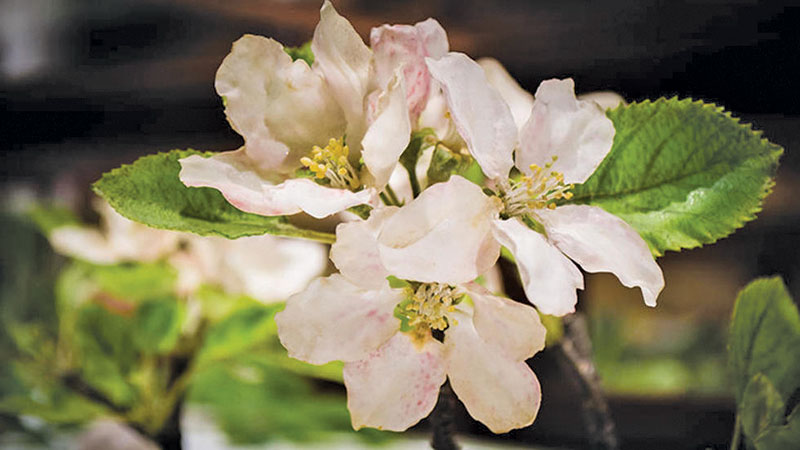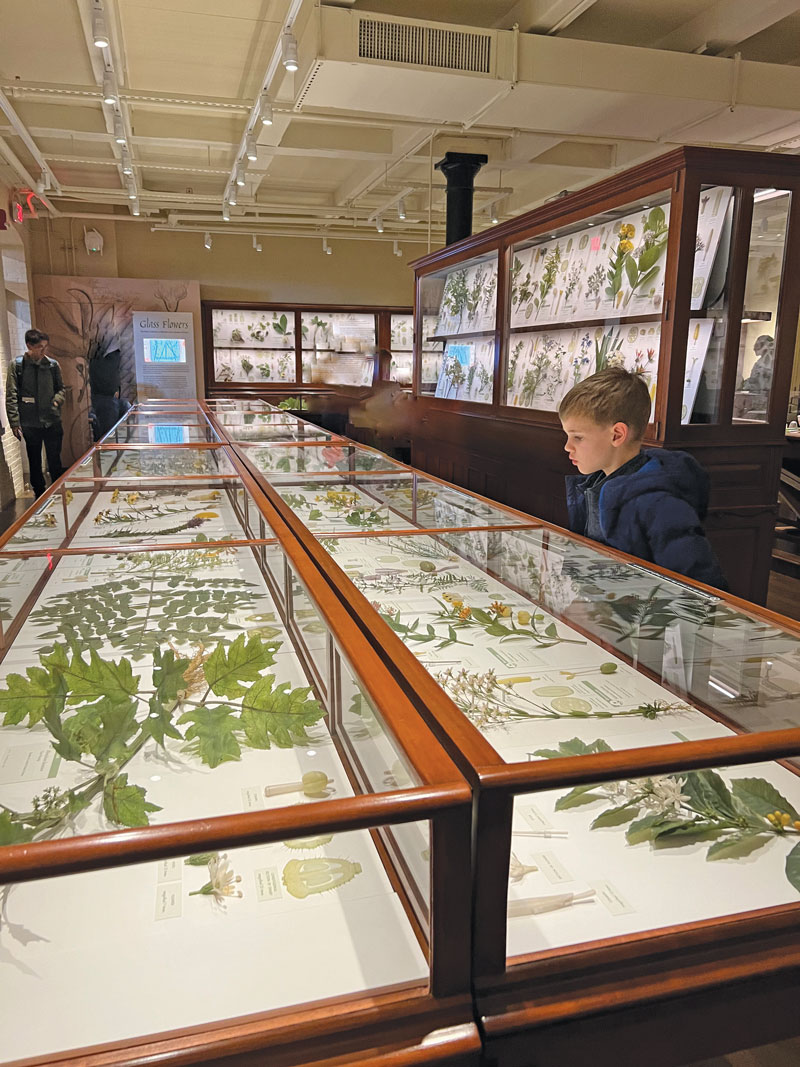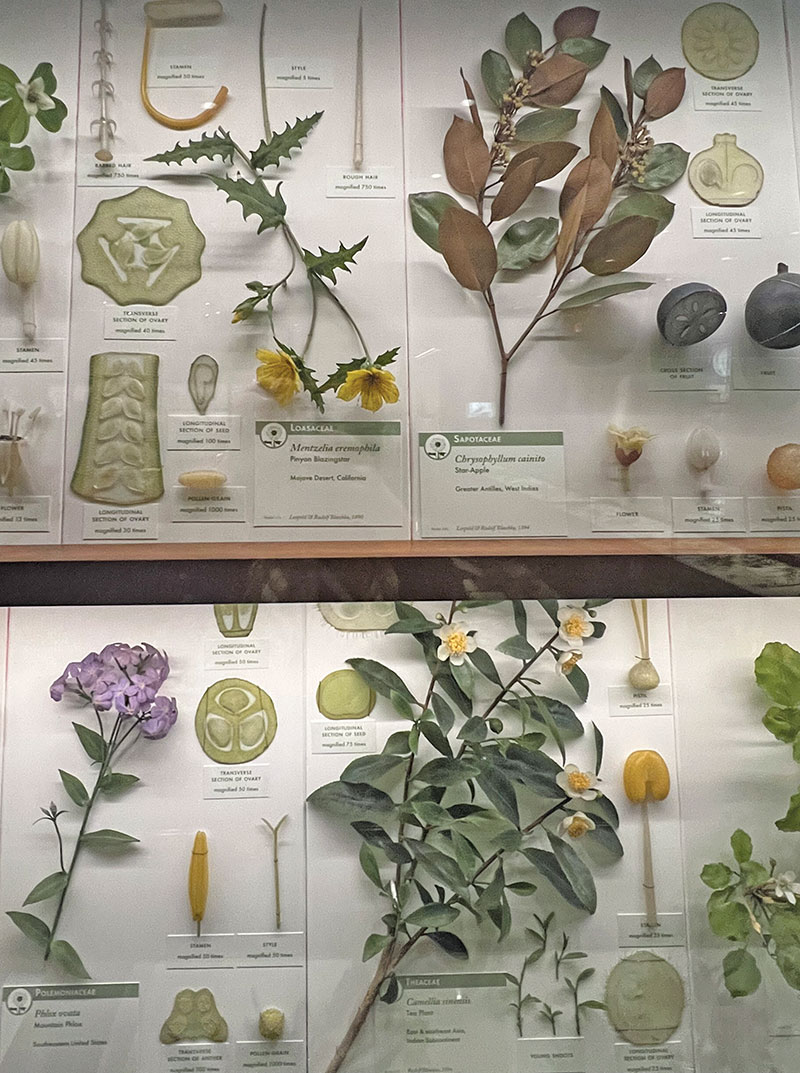Harvard’s Glass Flowers

A tip from a friend during a spring trip to Cambridge introduced us to a collection of everlasting flowers.

By GINNY VAN ALYEA
During a trip to Boston earlier this year, my family and I knew that since April can be a harsh month on the East Coast, we would do well to sightsee indoors. While visiting Cambridge friends suggested we make Harvard University’s Museum of Natural History our first stop. Even with the clear preview of what we were going to see – “the Glass Flowers” – we had no idea that this sprawling antique collection, located on the second floor of a quiet academic museum, would be a spring explosion that would trick the senses and also give us a science lesson. The floral models on display looked so realistic that my husband asked the security guard where the glass ones were. She responded that at least half of visitors to the exhibit ask the same thing.
The internationally acclaimed Ware Collection of Blaschka Glass Models of Plants was made by Leopold (1822-1895) and Rudolf Blaschka (1857-1939), a father and son team of Czech glass artists over a period of 50 years, from 1886 through 1936. During that time the Blaschkas produced 4,300 glass models that represent 780 plant species of flowering and nonflowering plants represented by nearly 850 life-sized models and over 3,000 highly accurate enlargements that detail plant anatomy and morphology, including many paper-thin crosssections, each with a label indicating the magnification level. A single hair of a Butterfly Flower from Chile, the “Schizanthus pinnatus”, was magnified 600 times, with the model measuring a couple of inches.

Today the models make up one of Harvard University’s most famous treasures, equal parts artistic marvel and gift to science. We spent around 45 minutes peering through the exhibition’s display cases, and after we left, despite now trusting my eyes to believe the flowers were in fact glass, I wanted to know a little more about how these crystalline botanical studies were created. The Blaschkas, first working in the 19th century, came from a Czech family of jewelers and glassmakers that could trace their profession as far back as the fifteenth century. To create the models the Blaschkas, working out of their studio near Dresden, Germany, would usually heat the glass to soften it and then shape it into a particular flower. In other cases they would blow glass into hollow shapes or components. To add the correct pigments, colored glass was used for many, while other early creations were “cold painted” – a process that uses a thin wash of colored ground glass or metal oxide(s) and heated until the material fused to the model. Later versions created by Rudolph after his father’s death used glass enamels for color instead of paint.

A Harvard Professor and founder of the Botanical Museum, George Lincoln Goodale, saw a need for life-like, long-lasting representatives of the plant kingdom for teaching botany. Mrs. Elizabeth C. Ware and her daughter Mary Lee Ware financed the creation of the collection and presented it to Harvard University as a memorial to Dr. Charles Eliot Ware, Class of 1834. The synthesis of a gifted family of artists as well as professor’s vision and a benefactor’s generosity ultimately cultivated a marvelous historic collection of plant models that have significantly contributed to scientific study and to an appreciation for art and science. There is much to behold and to learn for all ages during a visit to the Glass Flowers.
Harvard Museum of Natural History • 26 Oxford St., Cambridge, MA 02138
hmnh.harvard.edu/glass-flowers






